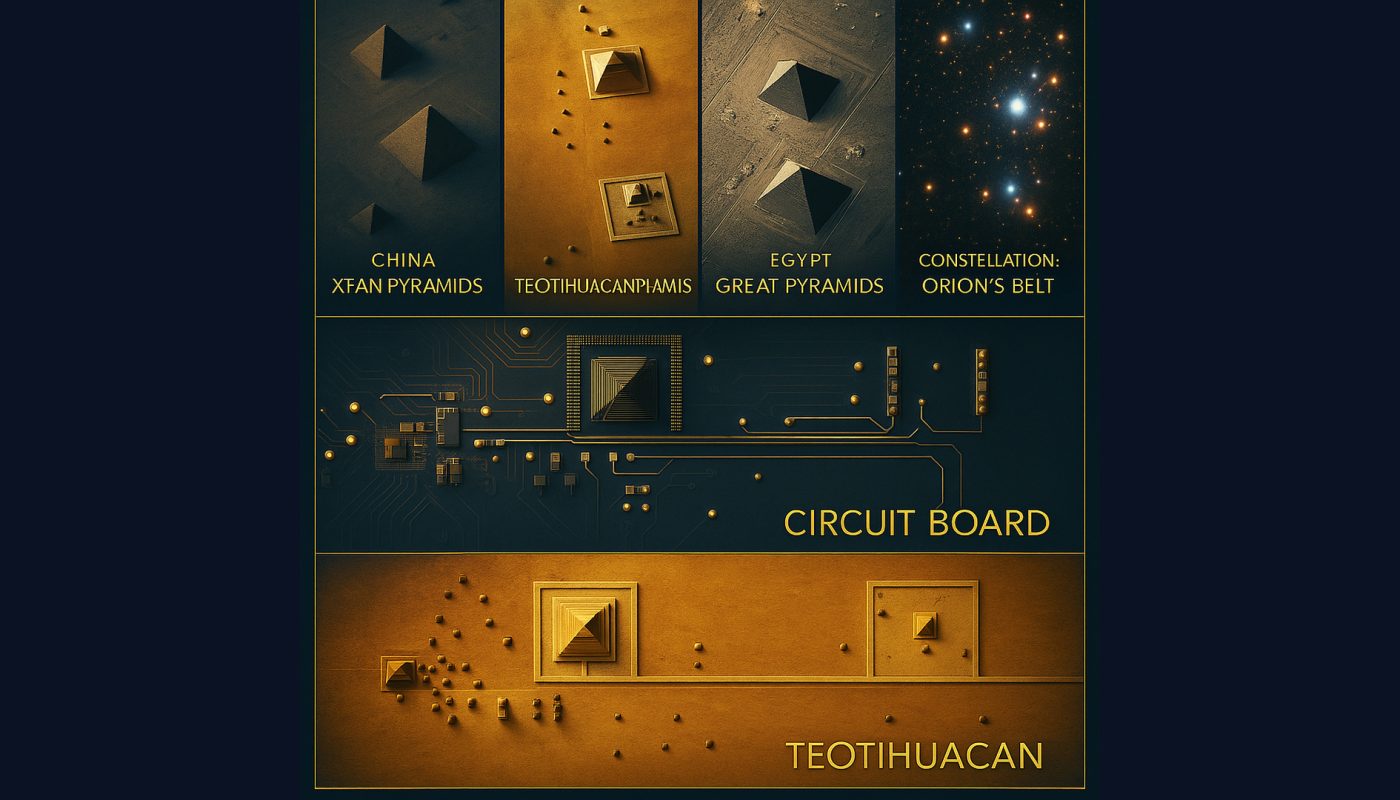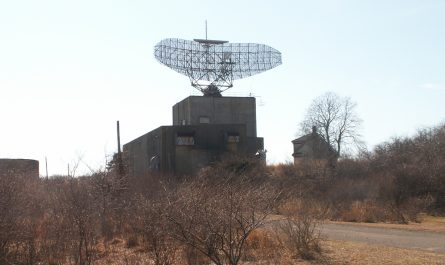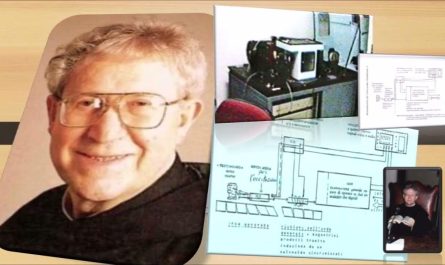Human history is filled with mysteries that challenge our understanding of progress. Across continents, ancient societies built enormous monuments that seem too advanced for their time. The pyramids of Egypt, Mexico, and China are not only architectural triumphs — they may also preserve knowledge about astronomy, energy, and technology that humanity has long forgotten.
Some modern researchers have noticed a fascinating pattern: the layouts of these ancient sites often resemble the designs of modern microchips and electrical grids. This curious resemblance raises a timeless question — could ancient civilizations have mastered technology that rivals our own?
The Celestial Blueprint – Pyramids and the Orion Belt
For decades, historians and astronomers have debated the mysterious alignment of ancient monuments with the stars of Orion’s Belt.
In Egypt, the Great Pyramids of Giza — Khufu, Khafre, and Menkaure — align almost perfectly with Orion’s three central stars. The precision of this alignment still astonishes engineers today.
Meanwhile, in Mexico, the pyramids of Teotihuacan — the Sun, the Moon, and the Feathered Serpent — follow the same tri-star pattern. Many researchers believe this layout was intentional, possibly created to honor celestial deities or to harness cosmic energy.
Further east, the Xi’an pyramids of China display similar geometric precision. Although many of them remain buried, satellite images reveal a strikingly familiar symmetry.
Clearly, different civilizations — separated by oceans and millennia — followed the same astronomical model. Was this shared knowledge, a coincidence, or evidence of a lost science that once spanned the planet?
Teotihuacan – The Ancient Microchip of Stone
Teotihuacan, often called “the city where gods were born,” continues to puzzle researchers. Its vast layout resembles a microchip more than a typical ancient city.
The Avenue of the Dead stretches in a straight line, linking monumental pyramids that act like power nodes. The Pyramid of the Sun stands at the center, mirroring the position of a processor on a circuit board. Smaller temples branch outward like connectors, forming intricate geometric patterns that seem almost electrical.
Interestingly, archaeologists discovered hundreds of small metallic spheres buried deep beneath the complex. These spheres, made of pyrite and iron, might have served a functional purpose. Their reflective and conductive properties suggest they were part of a larger, energy-related design.
Such evidence fuels speculation that Teotihuacan could have operated as an ancient energy grid rather than a purely ceremonial site.
Resonance, Energy, and Forgotten Science
Many ancient structures demonstrate an understanding of resonance — the way certain shapes and materials amplify vibration and energy.
The Great Pyramid of Giza, for example, contains chambers built from granite and quartz — materials that naturally generate and store electromagnetic energy. Modern simulations show that the pyramid’s internal structure focuses these vibrations toward its center.
Nikola Tesla, centuries later, proposed that Earth’s electromagnetic field could transmit power wirelessly. His experiments confirmed that natural frequencies could move energy across great distances. This concept mirrors what some believe the pyramids achieved thousands of years earlier — transmitting energy through the Earth rather than through wires.
At Teotihuacan, researchers found layers of mica, a mineral used today for insulation and energy control. Since mica does not exist naturally near the site, it must have been imported from far away. This choice implies deliberate engineering rather than random decoration.
The Global Energy Network
Across the world, many sacred monuments appear aligned along invisible paths known as Ley Lines — powerful geomagnetic routes that crisscross the planet.
Sites such as Stonehenge, Machu Picchu, Easter Island, and the Great Pyramid of Giza all sit at the intersections of these lines. According to several independent studies, ancient builders may have understood how to use these spots to collect and balance Earth’s natural energy fields.
If true, this knowledge suggests the existence of a global energy network — one that ancient civilizations could have tapped into to power their monuments or rituals.
Knowledge from the Stars – The Anunnaki Theory
Many ancient cultures claimed that their knowledge came from beings who “descended from the heavens.”
Sumerian texts describe the Anunnaki, deities who shared wisdom about mathematics, astronomy, and engineering. Mesoamerican legends speak of Quetzalcoatl, the feathered serpent god who brought science and light to humankind. In Egyptian myth, Thoth, the god of knowledge, arrived “from the stars” to teach writing and architecture.
These stories, told across continents, describe remarkably similar events. They may reflect distorted memories of real encounters — or perhaps symbols of humanity’s forgotten era of higher science.
Coincidence, Lost Knowledge, or Hidden Intelligence?
The pyramid alignments with Orion’s Belt and Teotihuacan’s microchip-like layout remain unexplained. Modern archaeology provides many theories, yet none fully address the global similarities in design, scale, and purpose.
If these patterns are mere coincidence, then chance has achieved extraordinary perfection. If they were intentional, we face a truth that could redefine history.
Perhaps ancient builders understood geometry, energy, and cosmic patterns in ways we no longer do. Or maybe their knowledge came from a source beyond our planet.
Regardless of the answer, one fact stands unshaken: the pyramids and ancient cities still guard secrets capable of rewriting humanity’s past — and reshaping our view of the future.



